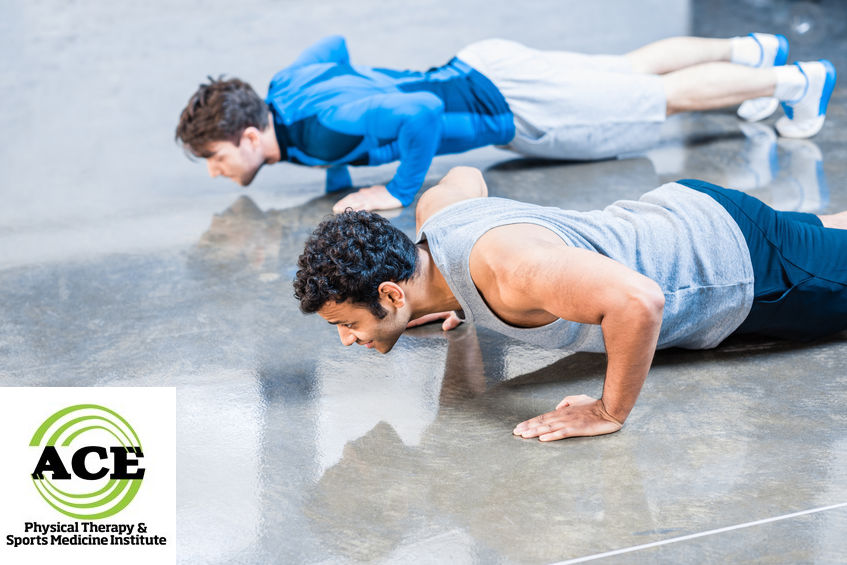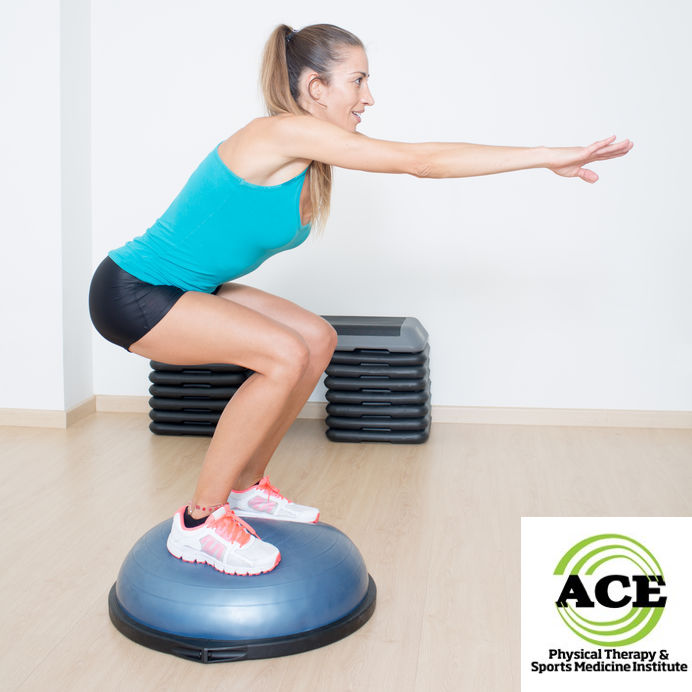DETAILED SKI AND SNOWBOARDING PRECONDITIONING EXERCISES

Tid Bits of Info
- Most average skiers come down the hill between 15-30 mph.
- Olympic downhill skiers can reach speeds as great as 95 +mph.
- Most common skiing injury is a knee injury and specifically a medial collateral ligament injury.
- Snowboarders suffer more wrist and upper extremity injuries and skiers suffer more lower extremity injuries.
- Seek the advice and treatment of a Physical Therapist for a thorough conditioning program to prepare for the upcoming winter season
Last week’s blog dealt with the need to be prepared for a skiing or snowboarding trip. The proper preparation will enable you to enjoy your time and hopefully avoid an injury. Here specific steps to develop the strength and endurance to reduce fatigue, stay erect, and reduce injuries. This ski and snowboarding preconditioning regimen can help prepare you to reach your goals and enjoy your outdoor activities.
A thorough, well-rounded workout routine helps you to develop a well-conditioned body with improved strength, muscular and cardiovascular endurance, flexibility and agility/balance. If the program is put together properly, all of these areas will be considered and the emphasis should be placed on your individual need. Seek the advice of a Physical Therapist or personal trainer for an assessment of your physical condition and needs prior to starting your workout routine for the upcoming winter season.
The following are some suggestions of exercises and activities that will help you be prepared for your trip.
Strength
Core
Planks:
Lie face down on the floor or exercise mat. Rise onto your forearms/elbows and support your body weight. Your body should form a straight line from head to toe. Hold the position for up to 1 minute.
Side Planks:
Lie on your left side. Position your left elbow beneath the shoulder on the floor and lift up your body. Support you body weight on left forearm/elbow and left ankle. Hold the position for up to 1 minute. Repeat on the right side.
Prone Superman:
Lie face down on the floor or exercise mat. Use a rolled up towel to support your forehead. Extend your arms straight out above your head. Simultaneously raise right arm and left leg. Pause for a moment then slowly lower back to the ground. Perform the same maneuver with left arm and right leg.
Upper Extremities
Push-ups:
Lie chest-down with your hands at shoulder level and palms flat on the floor slightly more than shoulder-width apart. Keep your legs straight and your toes pointed straight down towards the floor. Straighten your arms as you push your body up off the floor, making sure to keep your hands in the same position, trying not to bend or arch your back. Then slowly lower your body towards the floor until your chest touches.
Lateral shoulder raises:
Standing with your head centered and looking straight ahead, space your legs shoulder-width apart. Keep your abdominal muscles tight, knees bent, and chest relaxed. Slowly raise your arms directly out from your sides and up towards the ceiling. Stop when your elbows and hands are at shoulder level. Then slowly lower your arms while under control back to your sides.
Lower Extremities
Squats:
Stand with your feet flat on the floor about shoulder width apart and the toes slightly turned out. Keep your abdominals tight and your back in a neutral position. Slowly begin bending your knees until your thigh is parallel to the floor (as if you were sitting in a chair). Be sure to keep your kneecap from going in front of your toes as that will cause increased stress on the knee joint.
Lunges:
Stand with your feet flat on the floor and about shoulder width apart. Take one step forward, keeping your toes pointing straight ahead and landing heel-to-toe. Bend both knees until the front thigh is parallel to the floor. Push off the front foot back to the original starting position.
Improve Agility/Balance
You can train your body to respond faster to the obstacles faced in skiing. Improving agility involves strength, speed and power. Simple exercises such as balancing on one foot will increase your ability to balance but to prepare for the bumps and instability that occurs as you come down the mountain you will have to increase the difficulty of your routine. Exercises can be performed on an unstable surface such as a trampoline or Bosu ball to help you achieve better agility and balance. Jumping rope, plyometric jumps and shuttle runs can help to develop better body control which in turn enables you to be more agile and have better balance.

Focus on Flexibility
Stretching is always important for increasing overall flexibility. Dynamic stretching should be performed prior to your descent on the mountain and static stretching can be used to develop flexibility after your workout.
Core (static)
Back side twists:
Lie on your back with knees bent and feet flat on the floor. Keep pelvis against the floor or mat. Slowly turn both knees to the left side until a gentle pulling or stretch is felt in your lower back. Hold that position for 15-20 seconds before slowly returning to the starting position
Dynamic: Stand with both arms extended to the side and slowly rotated from side to side. You can incorporate arm and trunk motions that follow a “figure 8” to better stretch your torso and core
Lower Extremities
Hamstrings:
Static: Stand with your heel on a slightly elevated object. Lean forward at the waist with the goal of putting your chest on your kneecap. Stop when there is a pulling sensation in the back of the thigh.
Dynamic: Keep your knee fully extended and slowly bend forward to touch the floor. Take a step and repeat on the opposite side.
Groin:
Static: Sit on the floor with the soles of feet together and outside ankles touching floor. Grasp ankles with your elbows inside of your knees. Slowly lean forward and push your knees towards the floor with your elbows until a gentle pull or stretch is felt on the inside of your thighs
Dynamic: Take a side step and maintain the position on the floor of the foot that is not moving. Slowly bend the knee that is associated with the leg that moved. The pull should be felt in the inner thigh of the stationary leg.
Static: Stand on left foot holding left hand on the wall for balance. Lift the heel of right foot up towards your buttock and grasp with your right hand, raising the heel of the buttocks (or as close as comfortably possible), stretching your Quadriceps.
Dynamic: Take a step and reach down and grab the trailing foot and pull the heel of that foot towards your buttocks. Repeat on both sides for several steps
Maximize Cardiovascular Endurance
A good plan for maximizing endurance involves some form of cross-training exercises such as running, biking, rowing, in-line skating, the elliptical machine or the Nordic Track machine. Plan to exercise for about 30-45 minutes at a minimum of 3-4 times a week. When exercising, your goal should be to elevate your heart rate to around 75% of your maximum heart rate (a quick way to estimate this is by subtracting your age from 220 and then multiplying the result by 0.75). The sooner you start, the more energy you’ll have on and off the slopes.
These ski and snowboarding preconditioning suggestions can help you accomplish your goals and be prepared for your trip. Work with a Physical Therapist of personal trainer to help you achieve the fitness level that you need to be able to handle your time on the slopes. These healthcare professionals can guide you and modify your routine to avoid injury and make it more fun to perform.
























